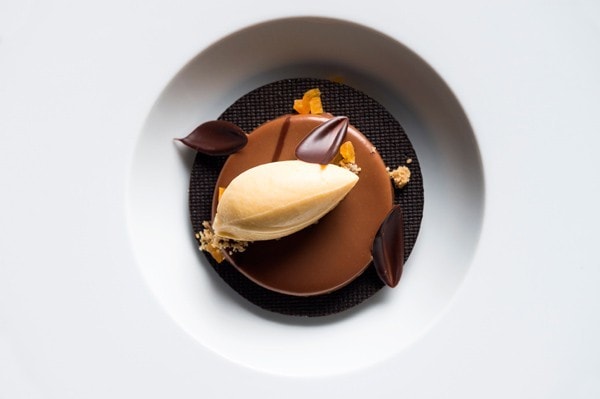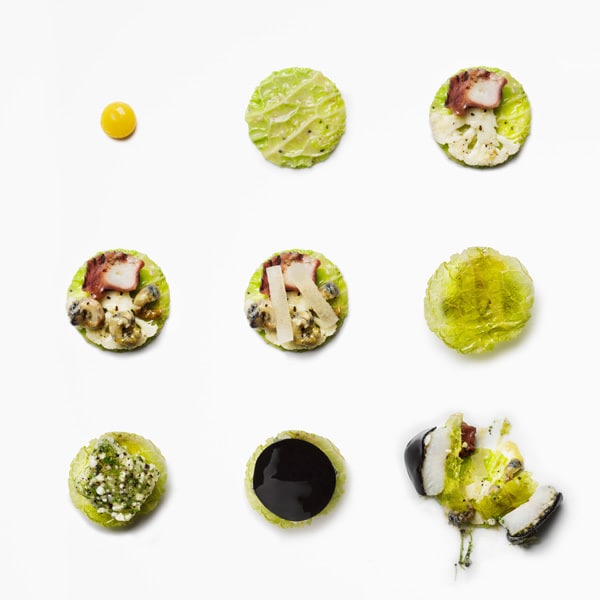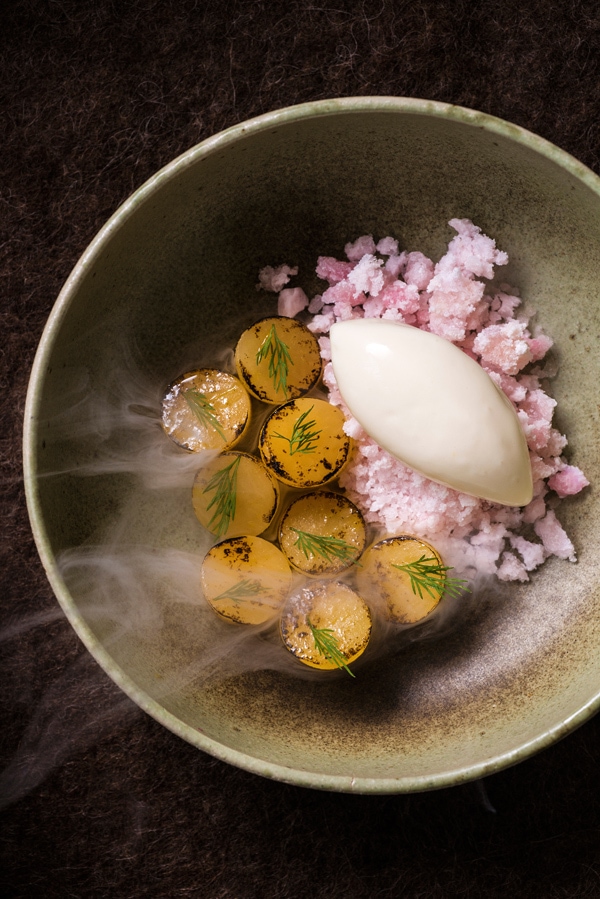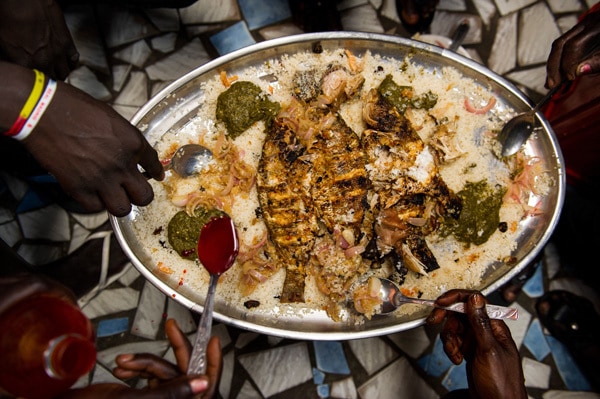Share
Food Photographer Evan Sung on Getting the Editorial Clients You Want
Evan Sung didn’t decide on a career in photography until after college, so he learned the ropes as a studio manager and assistant in New York and...

Evan Sung didn’t decide on a career in photography until after college, so he learned the ropes as a studio manager and assistant in New York and in Paris. He says he fell into his current focus on food photography, but assisting Paris photographer Giacomo Bretzel primed him for it. “We had some great adventures on food photography stories,”says Sung,who now lives in Brooklyn,N.Y.“We ate well, and great food was bound up in travel and new places and people.”
Since Sung returned to New York 10 years ago, he has built a food-focused client list that includes The New York Times, Vogue, Wall Street Journal, GQ, Bon Appetit, Food & Wine, Gourmet, Art Culinaire, Delta SKY, and others. His work also appears in several cookbooks, including To The Bone with Chef Paul Liebrandt, Classico E Moderno with Chef Michael White and North with Icelandic Chef Gunnar Gislason.

Photo by Evan Sung
How did you break into editorial food photography?
When I moved back to New York City in 2004, I shot for anyone I could. I ended up shooting assignments for a paper called The New York Sun. One of my first assignments was shooting a restaurant review. I enjoyed doing it, they seemed to enjoy what I had shot, and it became a regular gig.
Things snowballed from there. After about a year or so, I got a call from The New York Times and began doing the same for them, shooting restaurant reviews during Frank Bruni’s tenure. From there, I was meeting the whole spectrum of New York City restaurant personalities.
It’s a saturated market, in a way that I don’t think it was before 2004 and 2005. There is a ton of opportunity out there. New things are happening every day all over the country. So the challenge can be finding and building your niche in a very crowded industry. I’ve definitely noticed even a lot of non-food photographers adding “food” sections to their portfolio sites. People are crazy for food!
There are technical challenges, too—lighting, equipment, all the things that make it a craft worth working at and perfecting. And then there are budgets, the rise of social media, the changing media landscape, all of which conspire in various ways to make things both exciting and challenging at the same time.

Photo by Evan Sung
What are your tips for attracting the editorial clients you want? What marketing tactics do you use?
In the past, I’ve definitely enjoyed designing and printing my own mailers that I would send out to clients. I always thought there was great value in sending out something visual that photo editors could hold in their hands. I also do cold calling and emailing. I try to set up meetings and get to know people and faces, and get them to know my work and who I am. Lots of research can go into really understanding who your targets are and how your work fits, or doesn’t fit, with what they are doing.
I also think building a name and reputation for yourself is important. A lot of things come my way by word of mouth.
What is your social media strategy?
I can’t say I am the most aggressive social media person out there. I keep hearing that Facebook still is very powerful, but I’m rarely on it. The one thing I do with genuine pleasure is Instagram. In the last few years, I’ve tried to be more conscientious about what I put on there and how often. I tend to generally focus on promoting new work or putting out images from cookbooks and stories from the recent past. But I’ll always put out the random image or travel-related ephemera just for the fun of it. I really do enjoy the communal aspect of Instagram, and have made so many nice friends and connections from it.

Photo by Evan Sung
How does social media pay off for you?
I know for certain that it does pay off for a lot of photographers. I can’t say with any certainty that it has “paid off ” for me in the sense of bringing in all new clients and work, but I do feel like it’s great for maintaining and reinforcing work relationships.
I think it’s usually just a lot of common sense stuff. But often I end up in conversations with people, and some of the stories I hear make me wonder if common sense in short supply. Be punctual, be responsive, be agreeable and be collaborative. Don’t be obnoxious, don’t be a diva, don’t be short tempered. I often hear from clients, “We love working with you because you’re so calm!” I just think, What is going on out there on those other shoots?
As I mentioned before, we live in a very saturated market, so there are opportunities everywhere. If you cook, great! Cook something, shoot it, and practice, practice, practice. If you don’t, reach out to some new restaurants, if it seems appropriate, and establish a relationship to build up a portfolio. I really do believe this is a technical craft as well as a service industry, to some extent. And I do believe photographers should be paid what they are worth. But starting out, I think it’s fair to be transparent and make an arrangement that works for everyone if it can mean building a portfolio.
I’d refer back to the common sense answer. Working with the Times should be like working with any publication. Deadlines are shorter, budgets are smaller, but all the same principles apply.

Photo by Evan Sung
How did you get into shooting for cookbooks?
Early on, I was lucky to work with an amazing producer, Lauren Deen, who brought me onto some fun projects. One of them was a TV production [“Cook Yourself Thin”, Lifetime, 2009] that actually also came with a cookbook project, which was my first cookbook project. It was a great experience, I learned a lot, and the book actually was a bestseller on its release.
From there, I tried for a while to enter more into the cookbook space, but in all honesty, I probably had more work to do. Things happen at the right time I guess. In the last three to four years, cookbooks really began to take off for me, and I began to build good relationships with the art departments at various publishing houses. They can be challenging, intense projects. But nothing quite beats holding that final result in your hand and seeing it on store shelves (while we have bookshops, anyway).
What is your take on the explosion of food culture in recent years? How has this affected food photography?
The enthusiasm for food and chefs and restaurants seems all-consuming, and has been for the last decade or so. In the end, it has to be a good thing. The way people eat around the world has changed. American food culture has evolved, or maybe returned to, a deeper appreciation for quality and a connectedness to our own foodways. We also have developed an appreciation for an ever-expanding range of food cultures. That obsession has also led to a great sophistication about food imagery. People are more attuned than ever to how food looks, is photographed and is expressed.
There are times when it all seems a bit much, and I want to take a break from the whole thing. But then I just start getting hungry for a great slice of pizza or a good bowl of ramen, and I’m right back where I started.
For more tips to leverage your food photography skills, check out The Professional’s Guide to Food Photography.




